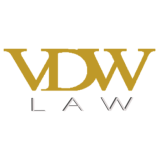Introduction
Estate planning is a crucial step in securing your family’s future. One effective tool in this process is establishing a family trust. This guide aims to demystify family trusts, making them accessible and understandable to everyone. Whether you’re just starting to think about estate planning or are looking for ways to protect your assets, this article is for you.
Understanding Family Trusts
What is a Family Trust?: A family trust is a legal arrangement where assets are held and managed on behalf of your family members. Think of it as a safe box, where you can keep your valuable assets not just for yourself, but for your loved ones too.
Types of Family Trusts: Family trusts come in various forms, with the two main types being ‘revocable’ and irrevocable’ trusts. A revocable trust allows you to retain control and make changes as needed, while an irrevocable trust, once established, cannot be altered easily.
Key Parties in a Family Trust
- Settlor: The person who creates the trust.
- Trustee: The individual or entity responsible for managing the trust assets.
- Beneficiaries: Those who benefit from the trust.

Benefits of Establishing a Family Trust
Asset Protection: One of the biggest advantages of a family trust is protecting your assets from unforeseen circumstances, such as legal disputes or creditors.
Tax Advantages: While it’s complex, in some cases, trusts can offer tax benefits, making them a savvy financial tool.
Control Over Assets: A trust allows you to specify how and when your assets are distributed, providing peace of mind about the future of your estate.
How to Set Up a Family Trust
Legal Requirements Setting up a family trust involves legal formalities. It starts with drafting a trust deed – a document that lays out the rules of how the trust will operate. This deed should include details about the assets, beneficiaries, and how the trust should be managed.
Choosing a Trustee Selecting a trustworthy and competent trustee is crucial. This can be a family member, a trusted friend, or a professional entity. The trustee’s role involves managing the trust’s assets responsibly and in the best interest of the beneficiaries.
Drafting the Trust Document A clear, well-drafted trust document is key. It’s advisable to work with a legal professional who specializes in trusts to ensure that all legal requirements are met and your intentions are clearly stated.
Common Misconceptions and Challenges
Dispelling Myths
- Myth: “Trusts Only Benefit the Beneficiaries After You’re Gone.”
- Reality: Trusts can be structured to provide benefits during your lifetime, not just after. They can offer financial management, asset protection, and even income streams depending on how they are set up.
Potential Challenges
- Complexity in Management: Managing a trust can be complex, requiring ongoing oversight.
- Legal Obligations: Trustees have legal obligations they must fulfill, which can be daunting without proper guidance.
Conclusion
In conclusion, establishing a family trust can be a wise decision for asset management and protection, offering flexibility and security for the future. While the process can seem complex, understanding the basics and consulting with legal professionals can simplify it.
If you’re considering setting up a family trust, it’s important to seek personalized advice. Reach out to our legal experts at VDW Law to explore your options and ensure that your trust aligns with your family’s needs and goals.



